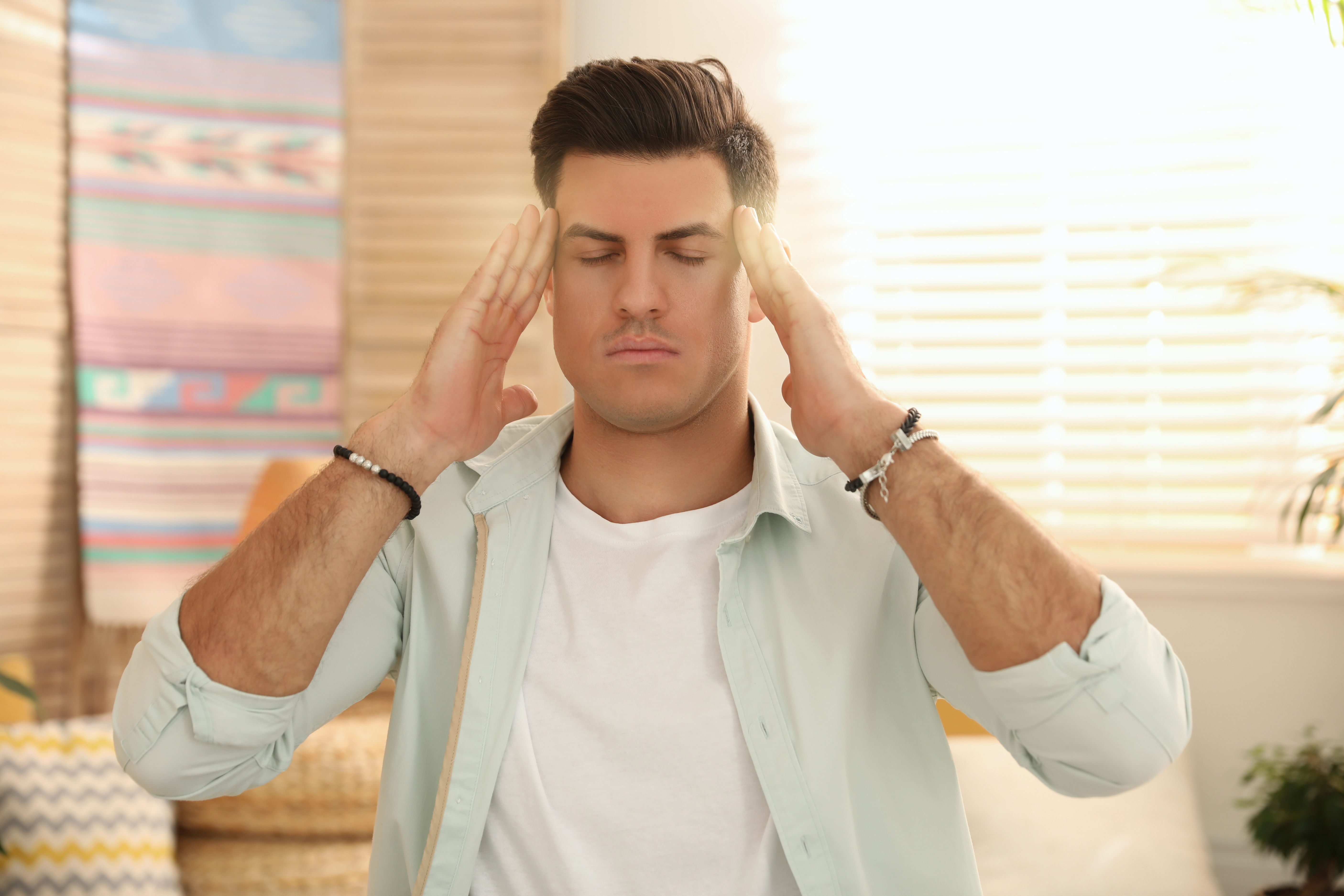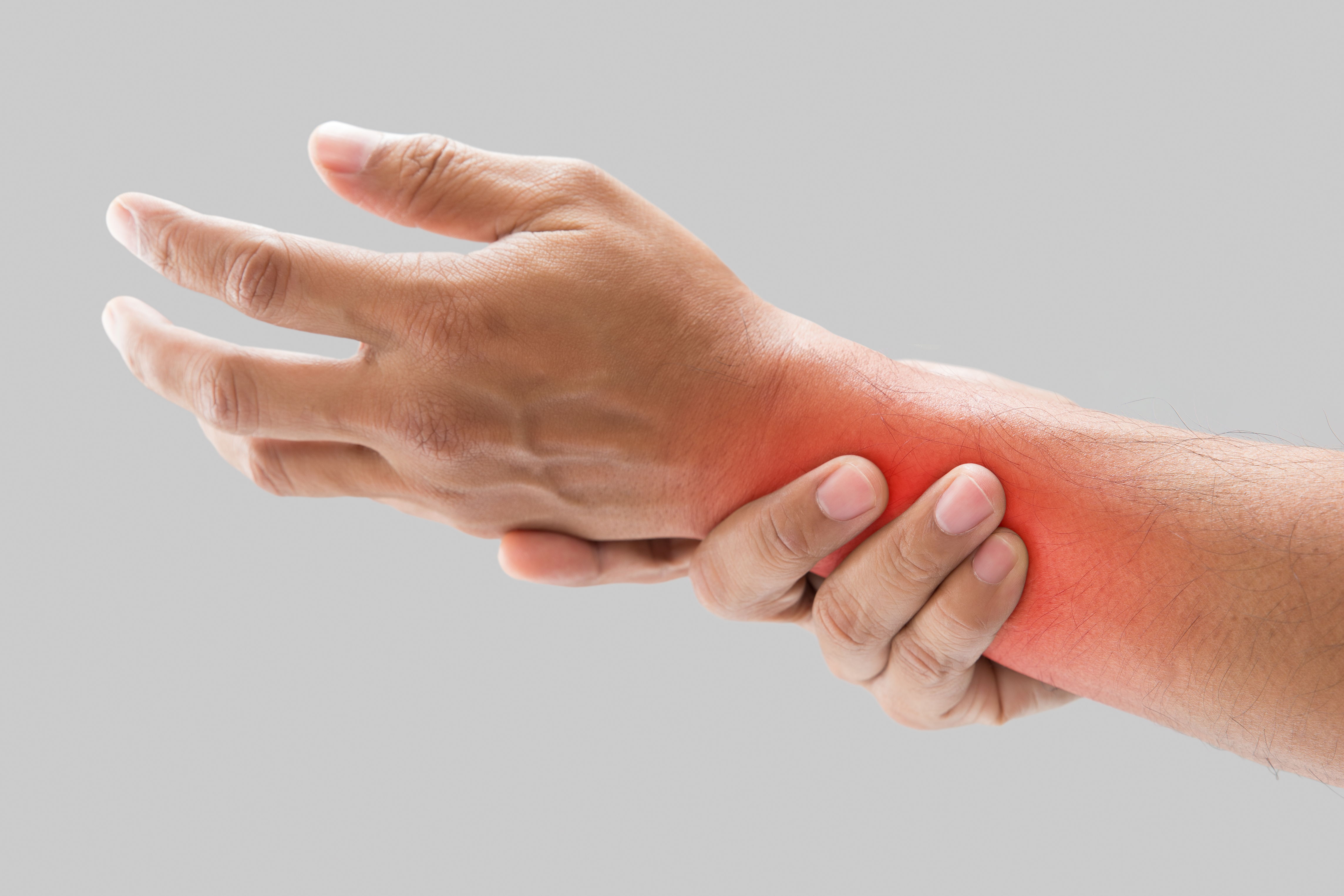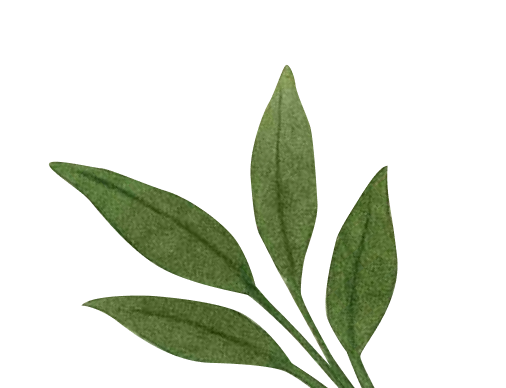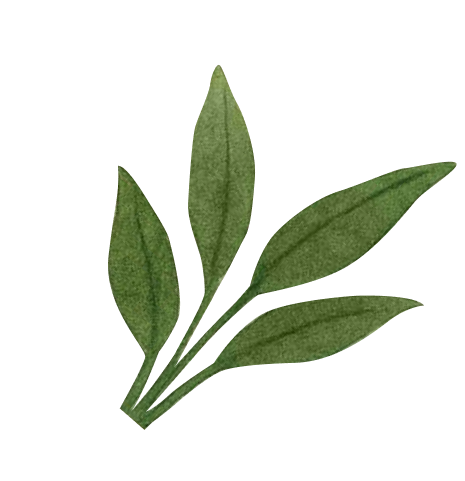Banish Stress & Tension with 5 Simple Self-Massage Techniques You'll Love!
May 02, 2023

In the hustle and bustle of our modern lives, it's all too easy to forget about the importance of self-care. We're constantly juggling work, family, and social responsibilities, leaving us with little time to focus on our own well-being. But, as the saying goes, "You can't pour from an empty cup." Taking time to nurture ourselves is essential for not only our mental and emotional health but also our physical health.
Enter the powerful practice of self-massage. This simple and enjoyable activity has a myriad of benefits, including stress relief, tension reduction, improved circulation, and increased flexibility. Self-massage is a natural and effective way to soothe aches, pains, and discomfort caused by stress and tension. It can be done anywhere, anytime, and requires no special equipment - just your own two hands!
Ready to embrace the art of self-massage and transform
your well-being? In this article, we'll guide you through 5 simple yet highly
effective self-massage techniques that you can easily incorporate into your
daily routine. Each technique targets a specific area of the body where stress
and tension commonly accumulate. So, let's dive in and explore these fun,
rejuvenating techniques that will have you feeling refreshed and revitalized in
no time!
1. Neck and Shoulder Rub
Neck and shoulder tension are common culprits when it comes to stress-related discomfort. Our modern lifestyles, including long hours spent hunched over screens and devices, contribute to muscle strain and tightness in these areas. This tension can lead to headaches, poor posture, and even affect our overall mood. The good news? A simple neck and shoulder rub can work wonders for releasing stress and alleviating discomfort.
How to perform the technique
- Find a comfortable seated position with your back straight and feet flat on the floor.
- Begin by gently tilting your head forward and allowing your chin to touch your chest. Feel the stretch in the back of your neck.
- Slowly roll your head to one side, feeling the stretch along the side of your neck.
- Using your fingertips or knuckles, gently massage the muscles at the base of your skull, working your way down to the tops of your shoulders.
- Apply gentle pressure and knead the muscles in your shoulders, focusing on any areas of tightness or discomfort.
- Next, use your fingertips to make small circles along the tops of your shoulders and upper back, moving from the center of your spine out towards your shoulders.
- Finally, squeeze your shoulder muscles between your thumb and fingers, gently pulling them away from your neck to release tension.
Tips for maximizing effectiveness
To maximize the effectiveness of your self-massage, remember to take slow, deep breaths as you work on your muscles, allowing your body to fully relax and release tension. It's crucial to listen to your body and pay attention to any areas that feel particularly tight or sore, spending extra time massaging those spots. Feel free to experiment with different techniques and pressures, as you may find that a combination of gentle and firm strokes is most effective for you.
Incorporate this self-massage into your daily routine, or turn to it whenever you feel tension building up in your neck and shoulders. For an added relaxation boost, consider using a few drops of essential oil, such as lavender or eucalyptus, on your fingertips before beginning the massage. The soothing scents can further enhance the calming effects of your self-massage session.
2. Temple and Jaw Massage
Stress often manifests itself in unexpected ways, and jaw tension is no exception. Clenching our jaw muscles, sometimes without even realizing it, can lead to headaches, facial pain, and even temporomandibular joint (TMJ) disorders. A temple and jaw massage is a simple yet highly effective technique to relieve this tension and promote relaxation throughout your entire body.
How to perform the technique
- Find a quiet, comfortable place to sit with your back straight and shoulders relaxed.
- Close your eyes and take a few deep breaths, focusing on releasing any tension in your face and jaw.
- Place your index and middle fingers on your temples, applying gentle pressure.
- Slowly move your fingers in small circles, massaging your temples and gradually increasing the pressure as needed.
- After about 30 seconds, move your fingers down to your jaw, just below your cheekbones.
- Gently massage the muscles along your jawline, using your fingertips to apply pressure and make small circular motions.
- Open and close your mouth slowly a few times to stretch and relax the jaw muscles further.
- Finish by massaging your earlobes, gently pulling and rubbing them between your thumb and index finger.
Tips for preventing headaches and jaw pain
To prevent headaches and jaw pain, it's important to be mindful of your jaw throughout the day, making sure you're not unconsciously clenching it. You may even want to set reminders to help you stay aware. Maintaining good posture while sitting and standing is also crucial, as poor posture can contribute to jaw tension and headaches.
Integrating stress-reducing activities into your daily routine, such as meditation, yoga, or deep breathing exercises, can help alleviate tension in the jaw and other areas. Make the temple and jaw massage a regular part of your self-care practice, especially during times of increased stress.
3. Hand and Wrist Relief
In today's technology-driven world, our hands and wrists are constantly in use, whether we're typing away at a computer, scrolling through our phones, or gripping the steering wheel during our daily commute. This constant strain can lead to discomfort and conditions such as carpal tunnel syndrome or repetitive strain injuries. Prioritizing hand and wrist health is essential for maintaining overall well-being and productivity, and a simple self-massage can work wonders in providing relief.
How to perform the technique
- Start by finding a comfortable seated position, resting your forearm on a table or your lap with your palm facing up.
- With your opposite hand, gently squeeze your wrist, applying moderate pressure and working your way up your forearm towards your elbow.
- Return to your wrist and use your thumb to massage the muscles in your palm, moving in small circles.
- Gradually work your way towards each finger, gently pulling and massaging each one individually from base to tip.
- Flip your hand over and use your fingertips to massage the top of your hand, focusing on the area between your thumb and index finger.
- Finish by gently stretching your fingers and wrist, flexing and extending them to improve mobility.
Tips for alleviating carpal tunnel and repetitive strain symptoms
To alleviate carpal tunnel and repetitive strain symptoms, it's essential to take frequent breaks when working on a computer or using digital devices, giving your hands and wrists time to rest and recover. Practicing proper ergonomics while typing or using your phone is also important; make sure to keep your wrists straight and relaxed.
Incorporate hand and wrist stretches into your daily routine to help maintain flexibility and prevent stiffness. Additionally, ensure that your work area is set up comfortably, using wrist rests or adjusting your chair to promote good posture.
4. Foot and Ankle Revitalization
Our feet and ankles play a crucial role in supporting our body weight and mobility throughout the day. However, they often bear the brunt of our daily activities, which can result in tension and discomfort and even affect our overall stress levels. Addressing foot and ankle tension can not only relieve physical discomfort but also contribute to a more balanced and relaxed state of mind.
How to perform the technique
- Begin by finding a comfortable seated position, either in a chair or on the floor.
- Remove your shoes and socks, and place one foot on the opposite knee, allowing easy access to your foot and ankle.
- Start by gently squeezing and massaging your foot, applying pressure with your fingers and thumbs, working from the heel towards the toes.
- Use your knuckles to apply deeper pressure and massage the arch of your foot, focusing on any areas of tension or discomfort.
- Gently pull and massage each toe individually, using your thumb and index finger.
- With your hand, grasp your ankle and massage the area around it using small, circular motions.
- Finish by stretching your foot and ankle, pointing and flexing your foot, and rotating your ankle in both directions.
- Repeat the process with your other foot.
Tips for soothing tired and achy feet
To soothe tired and achy feet, consider giving your feet a warm soak before performing the massage, which can help relax the muscles and improve circulation. Investing in comfortable, supportive footwear that provides adequate arch support and cushioning is also essential for maintaining foot health. Remember to take breaks throughout the day to elevate your feet, especially if you spend a lot of time standing or walking.
Incorporating foot and ankle stretches into your daily routine can further improve flexibility and prevent discomfort.
5. Lower Back Release
Lower back pain is a common issue that affects many people, often caused by a combination of factors such as poor posture, prolonged sitting, and stress. Tension in the lower back can exacerbate stress levels and contribute to a vicious cycle of discomfort and anxiety. By addressing lower back pain through self-massage, you can break this cycle and experience a more relaxed and pain-free existence.
How to perform the technique
- Find a comfortable seated position on a chair or the floor, with your back straight and feet flat on the ground.
- Place your hands on your lower back, with your fingers pointing towards your spine and your thumbs on either side.
- Apply gentle pressure and move your hands in small circular motions, massaging the muscles on either side of your spine.
- Gradually work your way up your back, focusing on any areas of tension or discomfort.
- Once you've reached the top of your lower back, slowly work your way back down toward your tailbone, repeating the process as needed.
- Finish by stretching your lower back, either by hugging your knees to your chest or performing a gentle forward fold.
Tips for maintaining a healthy lower back
Maintaining a healthy lower back is essential for overall well-being and stress reduction. To achieve this, ensure you practice good posture while sitting and standing, as improper alignment can contribute to lower back pain. Incorporating regular breaks and gentle stretches into your daily routine can help alleviate muscle tension and improve flexibility.
Additionally, consider engaging in core-strengthening exercises, as a strong core can provide better support for your lower back. When lifting heavy objects, always use proper form, bending your knees and keeping your back straight to avoid strain. Finally, if you experience persistent lower back pain, consult a healthcare professional for personalized advice and potential treatment options.
Transform Your Life with Massage: Embrace Wellness and Stress-Free Living
Incorporating self-massage into your daily routine is a simple yet effective way to prioritize self-care and enhance your overall well-being. These easy techniques can be practiced in the comfort of your own home, making them accessible and convenient for everyone. Remember that consistency is key, so try to make self-massage a regular part of your wellness routine to fully reap the benefits.
Regular self-massage can have numerous long-term benefits, including improved circulation, reduced muscle tension, increased flexibility, and a greater sense of relaxation. By addressing stress and tension early, you can help prevent the development of chronic pain and other stress-related health issues. Ultimately, self-massage is an empowering tool that allows you to take control of your well-being and live a happier, healthier life.
Bigtoe Yoga: Your Partner in Wellness
For those seeking additional support in their wellness journey, Bigtoe Yoga is a mobile massage and yoga company that brings relaxation and rejuvenation directly to you. With a team of experienced professionals, Bigtoe Yoga offers personalized massage and yoga sessions in the comfort of your home or workplace. Whether you're looking to deepen your self-massage practice, improve your yoga skills, or simply enjoy a moment of tranquility, Bigtoe Yoga is the perfect partner for your journey toward a stress-free, healthy lifestyle.
Need a massage today?
Same-day massage sessions available near you. Book online and a licensed Bigtoe therapist will be at your door - fast.
Book a Session Now




